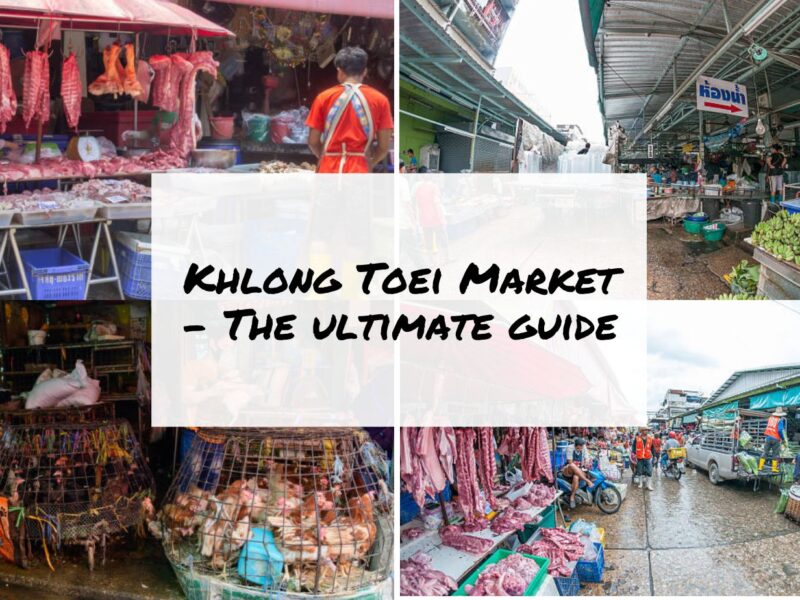Welcome to the land of smiles! Thailand is a country that boasts stunning beaches, a vibrant culture, and delicious food. But have you ever wondered just how big this Southeast Asian gem really is? From bustling Bangkok to tranquil Chiang Mai, Thailand packs a punch in terms of size and diversity. So let’s strap on our backpacks and explore the different dimensions of this incredible nation together. Get ready for an adventure as we dive into everything there is to know about just how big is Thailand.
Thailand is the world’s 12th-largest country by total area
Thailand is the world’s 12th-largest country by total area. It covers an area of approximately 513,120 square kilometers and has a population of over 60 million people. Myanmar borders Thailand to the north, Laos to the northeast, Cambodia to the east, and Malaysia to the south. The capital city is Bangkok.
The population of Thailand is over 66 million
Thailand is one of the most densely populated countries in the world. With a population of over 66 million people, it ranks as the 14th most populous country in the world. This high population density has led to significant infrastructure challenges, such as inadequate housing and an insufficient supply of clean water and sanitation. Despite these challenges, Thailand has made impressive progress in terms of human development indicators, including improved health care and education systems.
The capital of Thailand is Bangkok
Bangkok is the capital of Thailand, and with a population of over 10 million people, it’s one of the most populous cities in Asia. With so many people living in Bangkok, it can be hard to know where to start when exploring this fascinating city. Here are five things you should know about Bangkok if you’re planning a trip there:
- 1. Bangkok was once known as the “Emerald City” because of its beautiful scenery and lush green forests.
- 2. The city has been around for centuries and has seen a lot of change over that time. Today, Bangkok is a bustling metropolis with an array of shopping, dining, and entertainment options available to visitors.
- 3. Bangkok is home to some impressive temples and palaces, including the Grand Palace and Wat Pho Buddhist Temple.
- 4. Bangkok is well-connected by road and rail networks, making it easy to get around the city no matter where you’re located.
- 5. If you’re looking for something different to do while in Bangkok, head out to one of the city’s popular night markets or go for a long walk on one of the city’s many charming streets.
The official language of Thailand is Thai
Thai is the official language of Thailand and is spoken by over 60% of the population. Thai is a Tai-Kadai language and shares many similarities with Lao and Khmer. It is written in the Thai script, which is derived from the Khmer script. There are also several Thai dialects ranging in complexity from rural to urban accents.
Thai has been the official language of Thailand since 1939 and is one of the country’s two national languages alongside English. In addition, Thai is recognized as a regional language in Laos, Cambodia, and parts of Myanmar. The Thai script was developed from the Khmer script, which was used in Cambodia, Laos, and Vietnam.
The currency of Thailand is the Baht (บาท)
Thailand is a country in Southeast Asia. Burma and Laos border it to the north, Cambodia to the east and southeast, and Malaysia to the south. The capital city is Bangkok. Neighboring countries are China, India, and Indonesia to the west and northeast, respectively. Thailand’s population is approximately 66 million people.
The currency of Thailand is the Baht (บาท). The Baht was first introduced in 1852 as part of the Siamese monetary system. In 1902 it became an independent currency within the Thai crown colony. The Baht replaced several other currencies, including gold bars, silver coins, opium bricks, and rufous parakeets, as legal tender. In 1927 it was decimalized with 10 baht, equal to 1 pound sterling. The Thai government manages the supply of money through its monetary authority department, which also sets interest rates and regulates banking activities.
In order to make transactions easier for tourists, most major hotels now accept foreign currency along with Thai baht at a rate of about 100-110 baht to one US dollar or Euro. Banks are open Monday-Saturday, 09:00-16:00, except for National holidays which are observed by closing at 17:00, with some banks staying open until 18:00 while others close at 19:00.
Major religions in Thailand are Buddhism, Christianity, and Taoism
Thailand is home to a number of major religions. Buddhism is the majority religion in Thailand, accounting for over 60% of the population. Christianity also has a sizable following, with about 20% of the population identifying as Christians. Taoism is also popular in Thailand, with about 8% of the population identifying as Taoists.
Thai cuisine
Thai cuisine consists of many different types of food, including noodles, curries, seafood, and fruit. Noodles are a staple in Thai cuisine and can be found in a variety of dishes. Curries are another popular type of food in Thailand and typically consist of spices, coconut milk, and meat. Seafood is a popular dish in Thailand and includes many different types of seafood, such as shrimp, squid, fish, and crab. Fruit is also a popular type of food in Thailand and includes both fresh fruit and tropical fruits such as durian.
- Suan Son Pradipat Beach A Hidden Gem in Rayong Province - June 20, 2023
- Women of Thailand: Empowered and Resilient in the Face of Adversity - June 16, 2023
- Hong Thong: The Popular Thai Spirit You Need to Try - June 15, 2023


